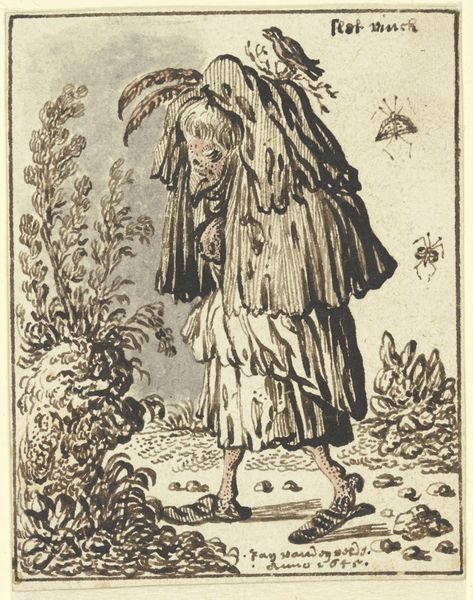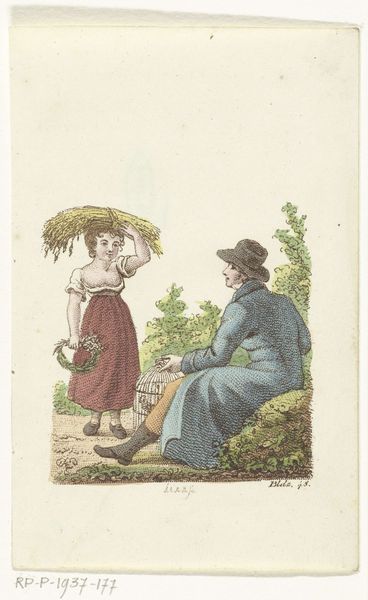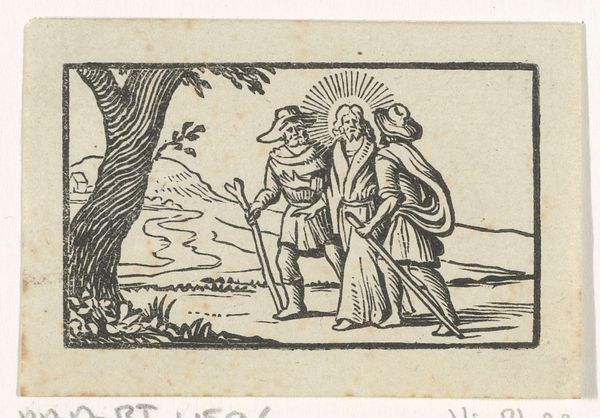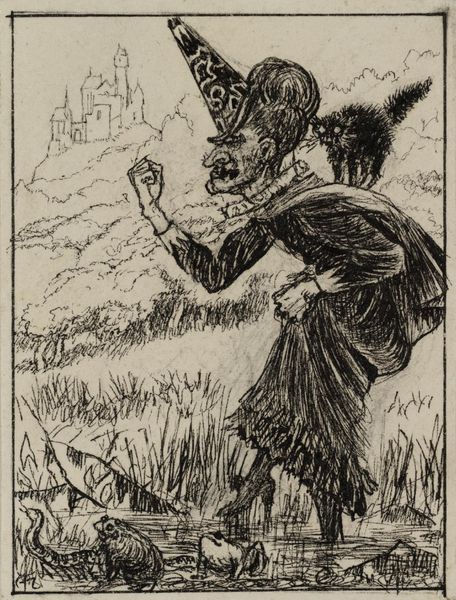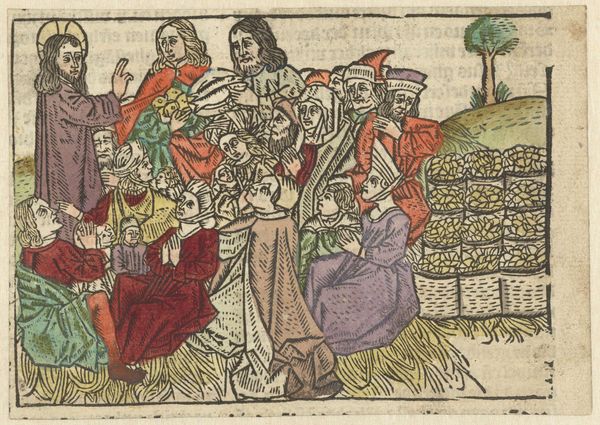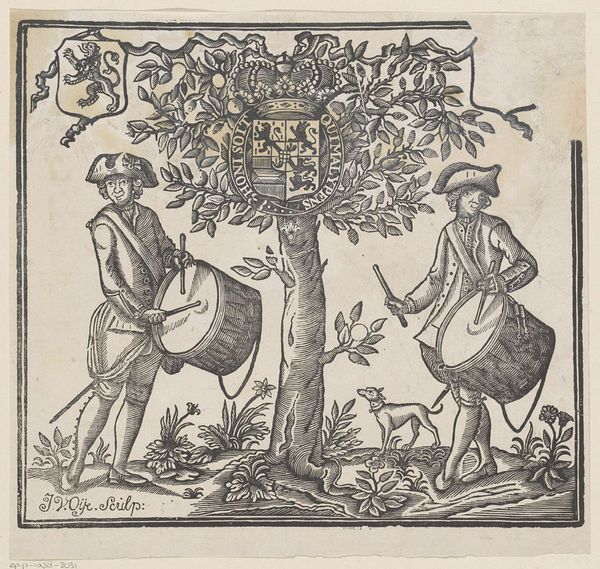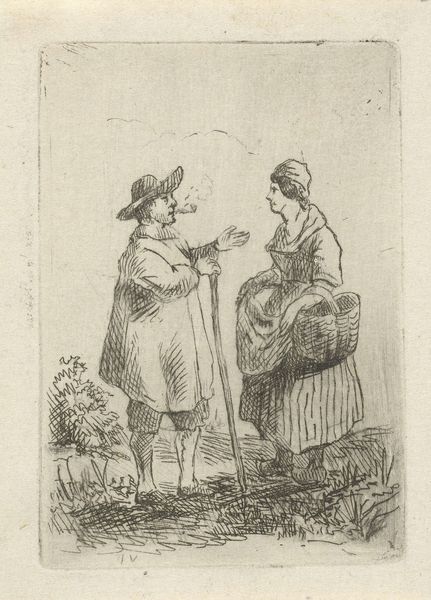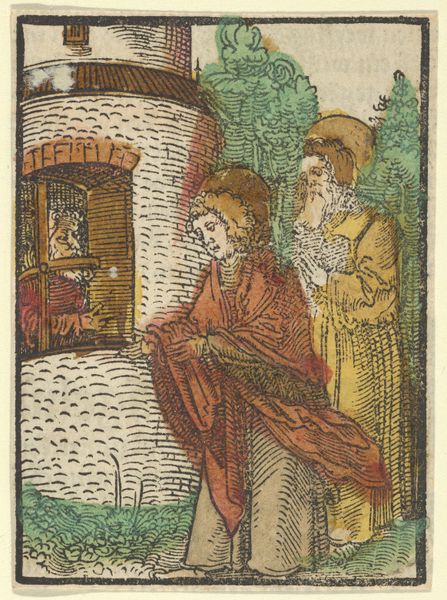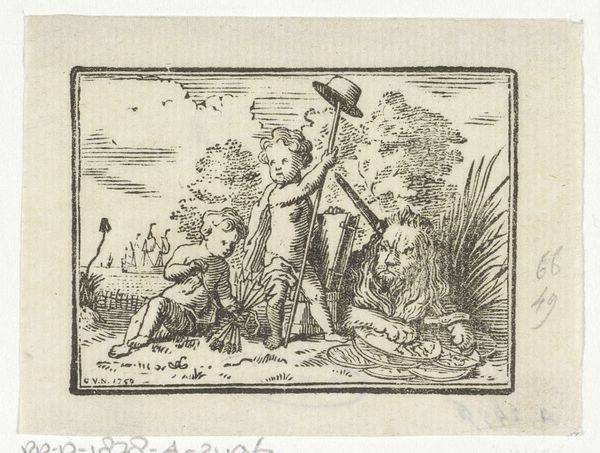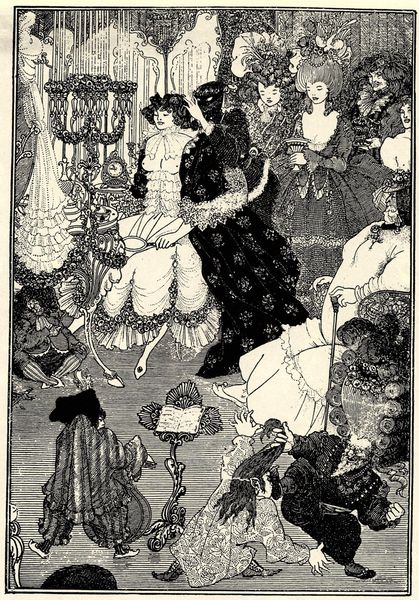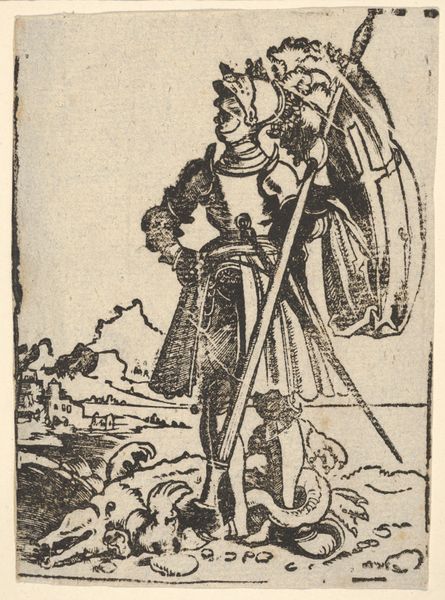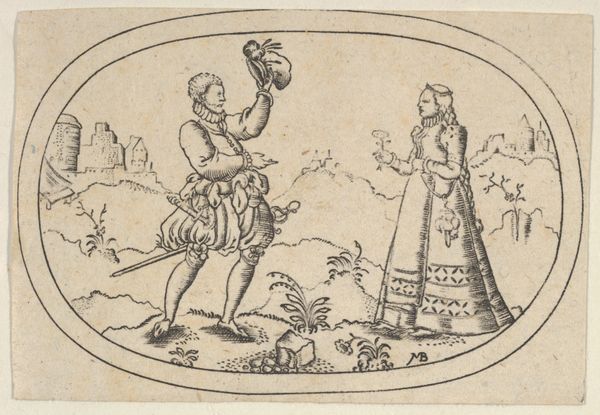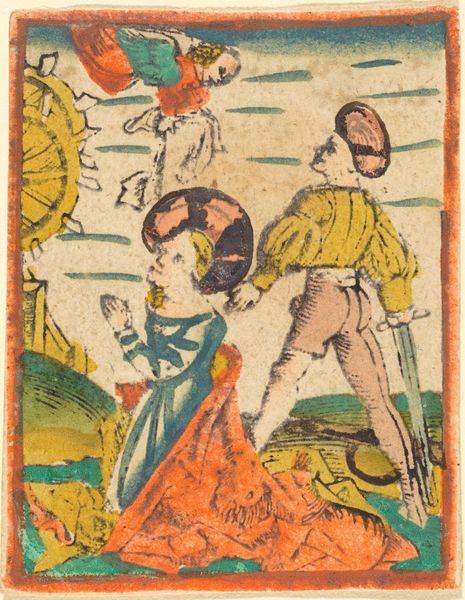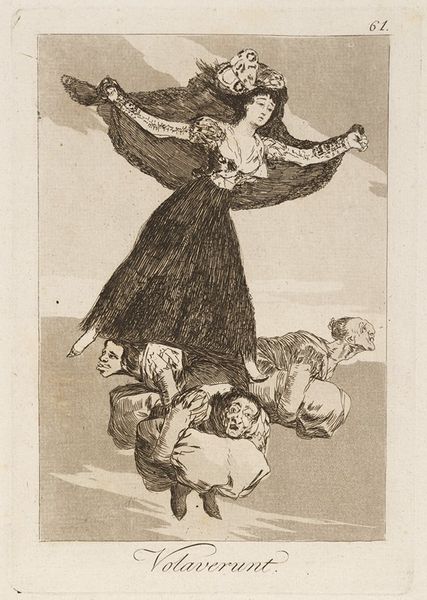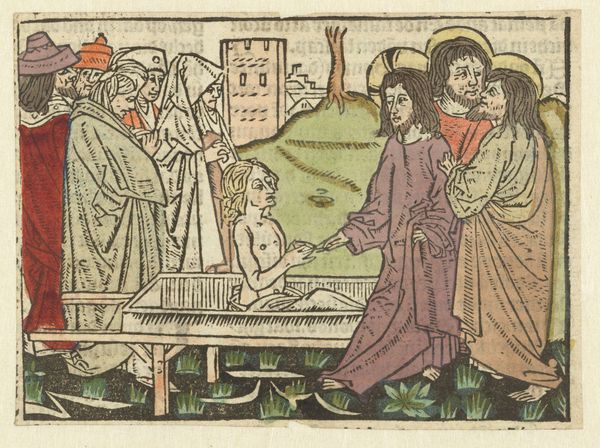
Copyright: Public Domain: Artvee
Editor: This whimsical piece is "How does my lady’s garden grow" by Walter Crane, dating back to 1877. It looks like an illustration of some kind, and there's a dreamy, slightly surreal quality to the garden. I find the use of personified flowers particularly striking. What social commentary, if any, can we make on Crane's art? Curator: It’s tempting to read it as a commentary on Victorian gender roles and the expectations placed on women, using gardens as metaphors for cultivated femininity and social constraint. The flowers with faces, some with aristocratic headwear, could symbolize how women are often displayed and judged based on their appearance and social standing. The woman watering them perhaps tending to those expectations. Editor: I never would have thought of it that way. So, the ‘lady’ isn't just gardening, but potentially maintaining her social persona, so to speak? Curator: Exactly. Consider Crane's background. He was involved in the Arts and Crafts movement, deeply invested in social reform and critical of industrialization and its effects on society. What happens if we place this work in conversation with his socialist values, his commitment to accessible art? Editor: Okay, so maybe the lady tending her garden highlights a critique of the aristocratic class. I think you are right! What is she holding in her dress then? Curator: Another good question: perhaps new seeds. A suggestion of change or regeneration, a quiet resistance. Or it could simply represent the expected posture of the woman. What I take away from it all is, What stories are we telling ourselves today, about gender and class? Editor: That's given me a lot to think about in terms of the relationship between art, social critique, and the artist’s values. Thank you. Curator: Of course, understanding Crane’s context really allows one to consider multiple meanings and layers to the art piece.
Comments
No comments
Be the first to comment and join the conversation on the ultimate creative platform.
